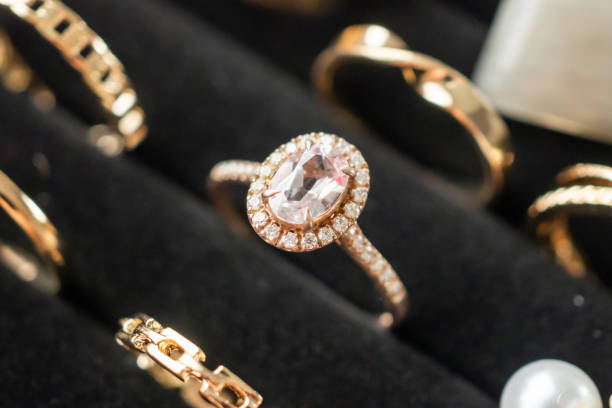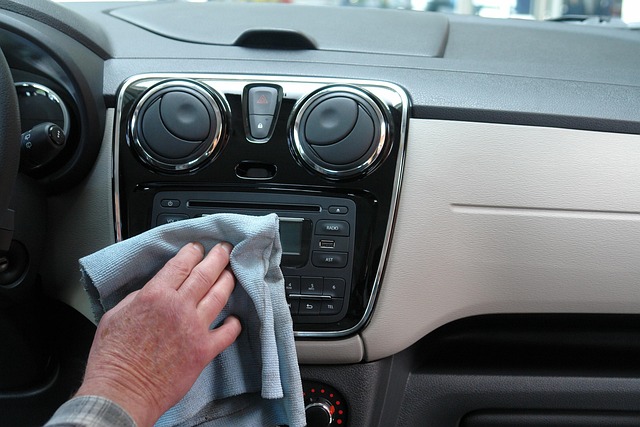Lab Diamonds Are Taking Over—and Their Prices Will Surprise You
The jewelry industry is experiencing a significant shift as lab-grown diamonds gain widespread acceptance among consumers. These scientifically created gems offer the same physical and chemical properties as mined diamonds but at a fraction of the cost. As technology advances and production scales up, lab diamonds are becoming more accessible, prompting many to reconsider traditional diamond purchases.

Over the past few years, lab-grown diamonds have moved from niche curiosity to mainstream option. What was once considered an alternative choice has become a legitimate contender in the diamond market. Advances in manufacturing technology, coupled with increased consumer awareness about ethical sourcing and environmental impact, have fueled this transformation. Understanding what drives this shift and how pricing compares to natural diamonds can help you make informed purchasing decisions.
What Is Driving the Lab Diamond Trend?
The lab diamond trend stems from multiple factors. Environmental consciousness plays a significant role, as lab-grown diamonds require substantially less land disruption and water usage compared to traditional mining operations. Ethical considerations also matter, with consumers increasingly concerned about the social impact of diamond mining in certain regions. Additionally, technological improvements have made lab-grown diamonds virtually indistinguishable from mined diamonds, even to trained gemologists without specialized equipment. The combination of quality, ethics, and value has created a perfect storm for market adoption.
Millennials and Gen Z consumers, in particular, have embraced lab-grown options. These demographics prioritize sustainability and transparency, making lab diamonds an appealing choice for engagement rings and fine jewelry. Retailers have responded by expanding their lab-grown offerings, further normalizing these products in the marketplace.
How Do Lab Diamond Prices Compare to Natural Diamonds?
Price differences between lab-grown and natural diamonds are substantial. Lab diamonds typically cost 40 to 70 percent less than comparable mined diamonds. A one-carat lab-grown diamond with excellent cut, color, and clarity might range from 800 to 1,500 dollars, while a similar natural diamond could cost 3,000 to 5,000 dollars or more. The price gap widens with larger carat weights, making lab diamonds particularly attractive for those seeking statement pieces without the premium price tag.
Several factors influence lab diamond pricing. Production costs continue to decrease as technology improves and more manufacturers enter the market. The growing method also affects price, with Chemical Vapor Deposition (CVD) and High Pressure High Temperature (HPHT) processes yielding different cost structures. Market competition among retailers has further driven prices down, benefiting consumers who now have more options than ever before.
Lab Diamond VS Diamonds: Understanding the Differences
When comparing lab diamonds to natural diamonds, the similarities far outweigh the differences. Both share identical chemical composition, crystal structure, and optical properties. They register the same hardness on the Mohs scale and display the same brilliance and fire. The primary distinction lies in origin: one forms naturally over billions of years deep within the Earth, while the other grows in a controlled laboratory environment over weeks or months.
Gemological institutes like the Gemological Institute of America (GIA) and the International Gemological Institute (IGI) grade lab diamonds using the same criteria as natural diamonds. Certificates detail the four Cs—cut, color, clarity, and carat weight—providing standardized quality assessments. Some certificates note the growth method, but this information does not affect the diamond’s physical characteristics.
Resale value represents one area where differences emerge. Natural diamonds traditionally hold value better in the secondary market, though this gap may narrow as lab diamonds become more established. For buyers focused on personal enjoyment rather than investment, this distinction may matter less.
What to Expect from Lab Diamond Prices in 2025
Looking ahead to 2025, several trends will likely influence lab diamond pricing. Continued technological advancements should further reduce production costs, potentially lowering retail prices. Increased market adoption may also drive economies of scale, making lab diamonds even more accessible. However, as demand grows, some stabilization in pricing could occur, particularly for premium quality stones.
Regulatory developments and industry standards will shape the market landscape. Clearer labeling requirements and consumer education initiatives may increase transparency, helping buyers understand exactly what they are purchasing. The Federal Trade Commission has already updated guidelines to ensure lab diamonds are properly disclosed, protecting consumers while legitimizing the product category.
Real-World Lab Diamond Pricing Insights
To provide concrete pricing context, here is a comparison of lab diamond offerings from established retailers. These examples reflect typical pricing structures across the market and demonstrate the range available to consumers.
| Diamond Size & Quality | Provider | Cost Estimation |
|---|---|---|
| 1 Carat, Excellent Cut, VS1, G Color | James Allen | 900 - 1,200 dollars |
| 1 Carat, Excellent Cut, VS1, G Color | Brilliant Earth | 950 - 1,300 dollars |
| 1 Carat, Excellent Cut, VS1, G Color | Clean Origin | 850 - 1,150 dollars |
| 2 Carat, Excellent Cut, VS2, H Color | James Allen | 2,400 - 3,200 dollars |
| 2 Carat, Excellent Cut, VS2, H Color | Brilliant Earth | 2,600 - 3,400 dollars |
| 2 Carat, Excellent Cut, VS2, H Color | Clean Origin | 2,300 - 3,000 dollars |
Prices, rates, or cost estimates mentioned in this article are based on the latest available information but may change over time. Independent research is advised before making financial decisions.
These retailers represent just a sample of the growing market. Many traditional jewelers now offer lab-grown options alongside natural diamonds, providing consumers with direct comparison opportunities. Online retailers often offer lower prices due to reduced overhead, while brick-and-mortar stores provide hands-on examination and personalized service.
Making an Informed Decision
Choosing between lab-grown and natural diamonds ultimately depends on personal priorities. If budget, environmental impact, and ethical sourcing rank high on your list, lab diamonds offer compelling advantages. If tradition, rarity, and potential resale value matter more, natural diamonds may align better with your values. Either choice can result in a beautiful, lasting piece of jewelry.
Education remains key. Understanding diamond grading, comparing certified stones, and purchasing from reputable retailers ensures you receive quality regardless of origin. Certification from recognized gemological institutes provides assurance and documentation for insurance purposes. Taking time to research and compare options leads to confident, satisfying purchases.
The diamond industry continues evolving, and lab-grown diamonds represent a significant part of that evolution. As technology advances and consumer preferences shift, the market will adapt accordingly. Whether you choose lab-grown or natural, the most important factor is finding a diamond that brings you joy and fits your individual circumstances.




